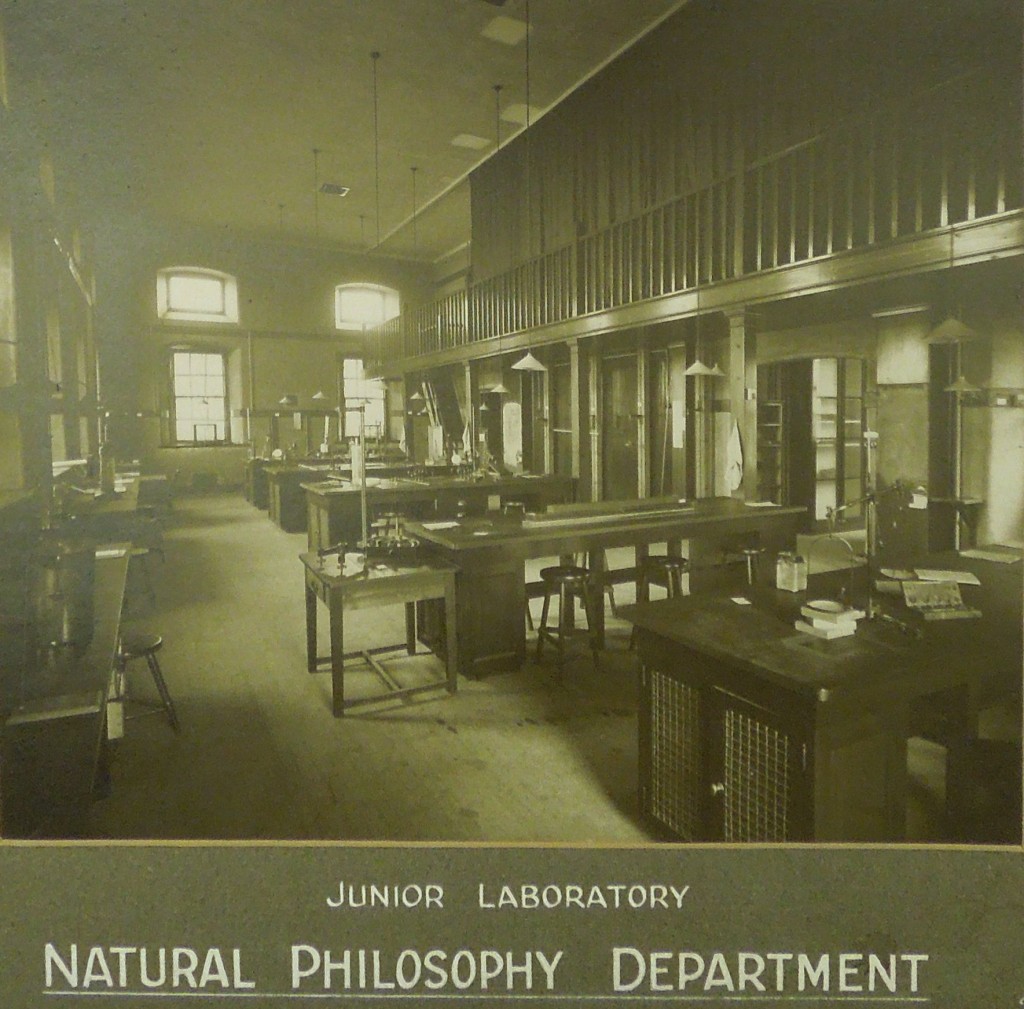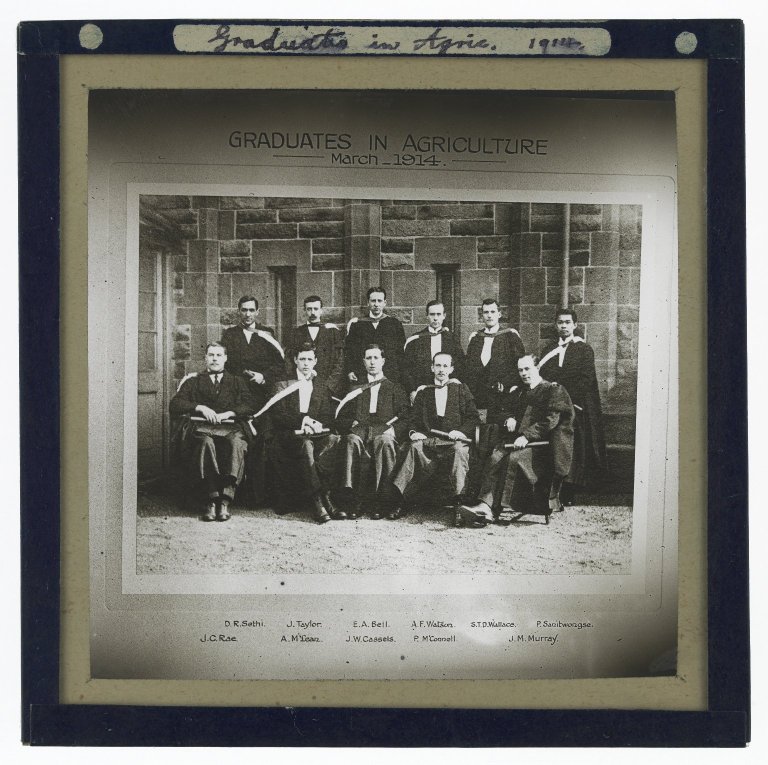We have a more detailed analysis of the University’s response to the experience and aftermath of WW1 to come later on. This article looks instead highlights a few of the changes in Science in and around the wartime years.
Campus changes
The Faculty of Science was founded in 1893. By 1906, pressure on space saw Engineering and Natural Philosophy move from the confines of the Old College campus to new accommodation at High School Yards. Shortly before the outbreak of war, further pressure on space saw Mathematics move to Chambers Street and Agriculture & Forestry to 10 George Square. Plans to build a new home for Chemistry at High School Yards were however interrupted other than a bit of additional basement space. These changes were the precursors to the permanent shift of Science from the central campus to the new Kings Buildings campus, which began shortly after the war.
Student numbers
Numbers of students studying science subjects dropped off during the wartime years, before rising dramatically afterwards. In 1913/14, there were 428. The lowest came in 1915/16, with 147. Numbers then rose, eclipsing the pre-war figure in 1918/19 with 678.
The War Effort
In 1908, James Walker was appointed Professor of Chemistry. When, in 1915, there was a serious shortage of explosives, Walker, with colleagues, took over a disused chemical factory and began TNT production. The war years also saw losses amongst staff and students (which will be covered in another post). In Science, one such loss was Arthur Dukinfield Darbishire in 1915.
Further Reading
- For a concise history of Science at the University of Edinburgh, read Birse, R. M., “Science at the University of Edinburgh, 1583-1983”
- The Chemistry has a god summary history on its own web pages
- Our History is a growing online resource about the history of the University


